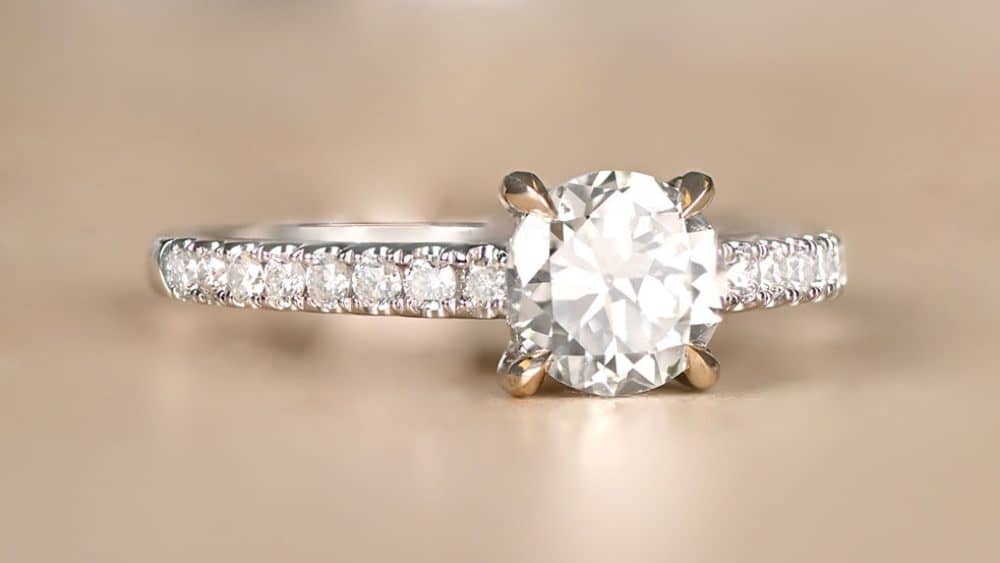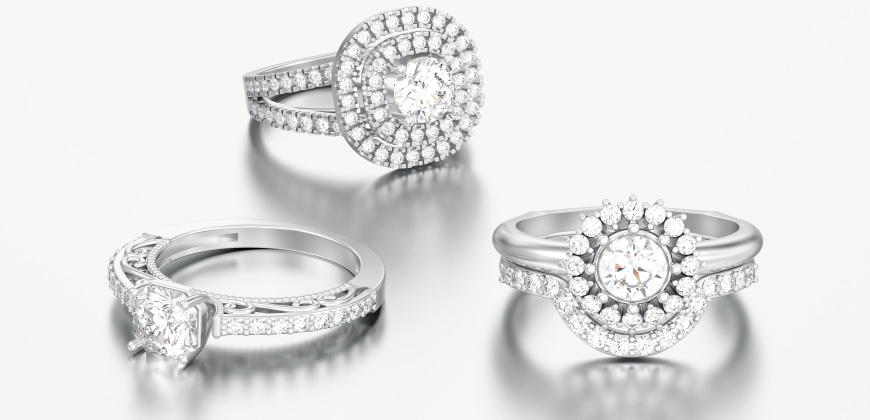Are you looking to learn more about different types of jewelry settings? If so, you’ve come to the right place! This article will provide you with a comprehensive guide to jewelry settings. You’ll learn the different types of settings, what they are used for, and how to choose the right one for your jewelry. So, let’s get started and explore the world of jewelry settings.
1. Prong Settings
Prong settings are one of the most popular types of jewelry settings, especially for engagement rings and diamond jewelry. This setting consists of small metal prongs that hold the gemstone in place. Prongs can be made of different metals like platinum, gold or silver and can be pointed or rounded.
Prong settings are available in different styles, including four-prong, six-prong, and bezel. Four-prong settings are the most popular as they allow maximum light to pass through the diamond, enhancing its brilliance. Six-prong settings are more secure and hold the diamond in place better, but they may obscure some of the diamond’s light. Bezel settings are a more modern option, with the metal encircling the diamond and holding it in place.
Prong settings are versatile and can be used with different shapes of gemstones, including round, oval, princess, emerald, and pear. They are also easy to clean and maintain. However, prongs can wear down over time, and the gemstone may loosen or even fall out if the prongs are not checked regularly.
Overall, prong settings are a classic and elegant choice for any jewelry piece.

2. Channel Settings
Channel settings are a popular choice for those who want to show off the beauty of their gemstones. This setting involves a groove being cut into the metal band to hold the gemstone securely in place. The sides of the metal band are then pushed over the edges of the gemstone, creating a channel-like effect. This setting is ideal for those who want their gemstones to be the focal point of their jewelry.
One of the benefits of channel settings is that they provide excellent protection for the gemstone. Since the sides of the metal band are pushed over the edges of the gemstone, it is less likely to fall out or get damaged. This setting is also very versatile and can be used for a variety of different gemstones, including diamonds, sapphires, and emeralds.
If you’re looking for a classic and timeless look, a channel setting is a great option. It’s also a great choice for those who want a low-maintenance setting. However, it’s important to note that resizing a channel-set ring can be difficult, so it’s important to get the sizing right the first time.
For more information on channel settings, check out this resource from the Gemological Institute of America.

3. Bezel Settings
A bezel setting is a type of jewelry setting in which a metal rim or collar wraps around the girdle of the gemstone. The metal can either be casted around the stone or formed to fit the edges of the stone. This setting is popular for rings and earrings and is often seen in antique jewelry.
Bezel settings are one of the most secure settings for gemstones, as the metal rim holds the stone firmly in place. The metal also protects the stone from damage and prevents it from becoming loose. In addition, the metal rim can help to enhance the beauty of the stone, as it can be engraved with a unique design or pattern.
When shopping for jewelry with bezel settings, it is important to consider the quality of the metal used. The metal should be of a high quality and be able to withstand wear and tear. It is also important to check that the bezel is securely attached to the metal and that the stone is firmly held in place.
It is also important to consider the design of the bezel setting. The design should complement the shape and size of the stone and should be carefully chosen to enhance the beauty of the gemstone.

4. Bar Settings
A bar setting is a type of jewelry setting that holds a gemstone in place by using a bar-like mechanism. The bar can be made of a variety of metals, such as gold, silver, or platinum. The gemstone is placed in the middle of the bar and then attached to the metal setting with two prongs. This type of setting is often used for earrings, necklaces, and rings. It is a simple and secure way to keep a gemstone in place.
The bar setting is also known as a prong setting or a claw setting. This type of setting is relatively easy to create and is often used for more affordable pieces of jewelry. It is also a popular choice for rings with a single gemstone, as the setting doesn’t take away from the beauty of the gemstone.
When choosing a bar setting, it is important to consider the size and shape of the gemstone. If the gemstone is too large, it may not fit in the setting. It is also important to consider the size of the prongs, as they should be strong enough to securely hold the gemstone in place.
It is also important to consider the quality of the metal used for the setting. For example, gold and platinum are more expensive but are more durable than silver. It is also important to consider the quality of the gemstone. If the gemstone is of poor quality, it may not be suitable for a bar setting.

5. Pave Settings
Pave settings are a popular choice for jewelry, as they maximize the sparkle of diamonds or other gemstones. This setting style is also known as a ‘micro-pave’ setting, as the stones are set very close together. Pave settings are created by setting small stones into a thin metal strip, which is then attached to the base of the jewelry piece. It is important to note that pave settings are not as durable as other settings, as the stones are not held in place by metal prongs.
When selecting a pave setting, it is important to pay attention to the craftsmanship and quality of the setting. A well-crafted setting will ensure that the stones remain secure. Additionally, when selecting a pave setting, it is important to consider the size of the stones. Smaller stones are best suited for pave settings, as they can be set very close together.
To ensure the longevity of your pave setting, it is important to care for your jewelry appropriately. It is best to avoid contact with harsh chemicals, as this can damage the metal. Additionally, it is important to clean pave settings regularly, as dirt and debris can accumulate in the small spaces between stones.

6. Tension Settings
Tension settings are a popular choice for those who want to showcase the beauty of their gemstones without the distraction of prongs or bezels. In a tension setting, the gemstone is held in place by the pressure of the metal band, which creates a striking visual effect.
However, tension settings require a high level of precision and expertise to create. The metal band needs to be precisely calibrated to the exact size of the gemstone, and the tension needs to be just right to hold the gemstone securely without damaging it.
One of the benefits of tension settings is that they allow the maximum amount of light to enter the gemstone, which can enhance its brilliance and sparkle. However, this also means that tension settings are not ideal for softer gemstones, which may be more prone to scratching or chipping.
If you’re considering a tension setting for your jewellery, be sure to choose a reputable jeweller with experience in creating tension settings. They should be able to provide you with detailed information about the materials and techniques used in the setting, as well as any maintenance requirements.

Overall, tension settings can be a stunning choice for showcasing your gemstones in a unique and modern way. Just be sure to choose a jeweller with the experience and expertise to create a high-quality tension setting that will stand the test of time.
Conclusion:
Jewelry settings play a pivotal role in showcasing gemstones to their best advantage. From the classic prong setting that allows maximum light exposure to the gemstone, to the bezel setting that offers protection with its metal rim, each setting type has its own aesthetic and functional benefits. The channel setting, which holds stones between two horizontal channels, is ideal for row designs, while the tension setting uses the tension of the metal to hold the gemstone in place, creating an illusion of the stone floating. Understanding these settings can aid in making informed decisions when purchasing or designing jewelry.
